(Web3 Daily) is an official comprehensive daily report launched by Web3Caff, focusing on significant news, official updates, and selected excellent articles from the past 24 hours in the Web3.0 field, aimed at helping Web3.0 enthusiasts and builders quickly understand the latest industry dynamics. If you want to further stay informed and comprehensively understand the latest industry trends and exciting articles, please remember to follow our official Twitter.
Cover: Photo by Steve Johnson on Unsplash
California in the U.S. initiates the 'Breakthrough Project', inviting executives from Ripple and Coinbase to participate in government and enterprise reforms.
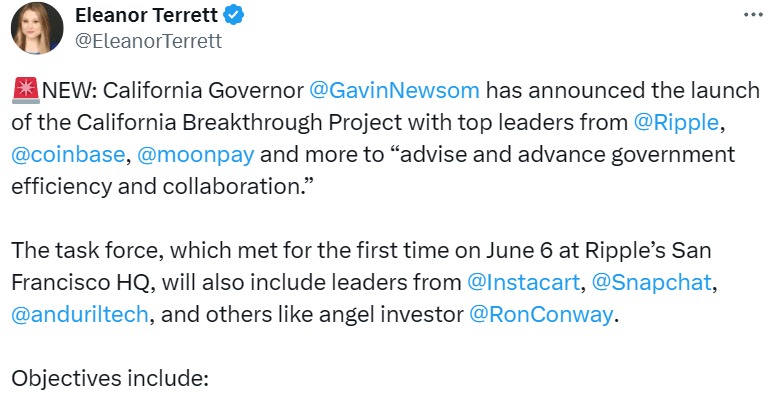 Source: Eleanor Terrett
Source: Eleanor Terrett
A new Bitcoin proposal aims to freeze BTC that is vulnerable to quantum attacks, including that of Satoshi Nakamoto.
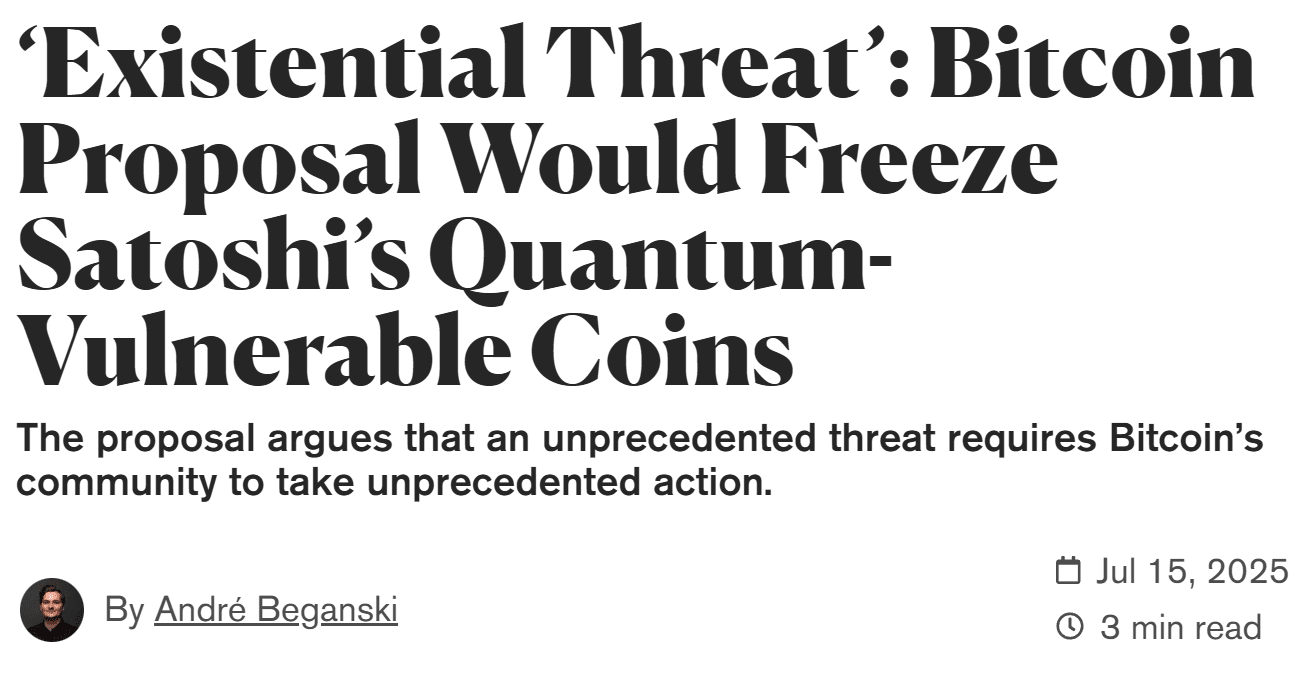 Source: Decrypt
Source: Decrypt
JPMorgan and Citigroup are considering issuing stablecoins.
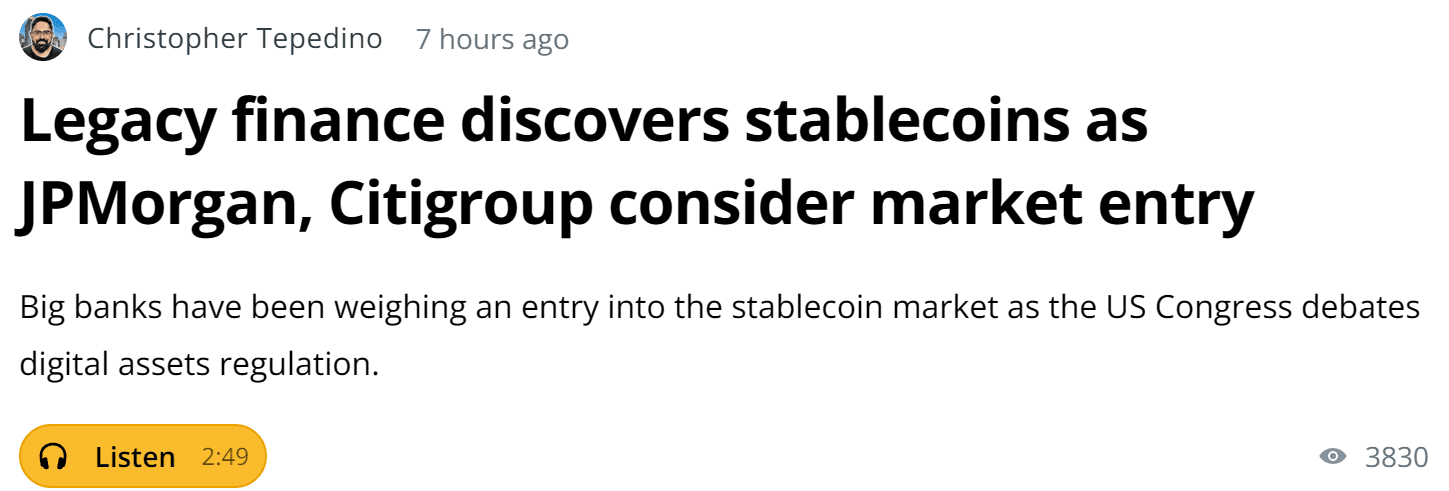 Source: Cointelegraph
Source: Cointelegraph
Tether held over $127 billion in U.S. Treasury bonds in the second quarter of this year.
 Source: Paolo Ardoino
Source: Paolo Ardoino
Nasdaq-listed game publisher Snail Games is exploring the development of a dollar stablecoin.
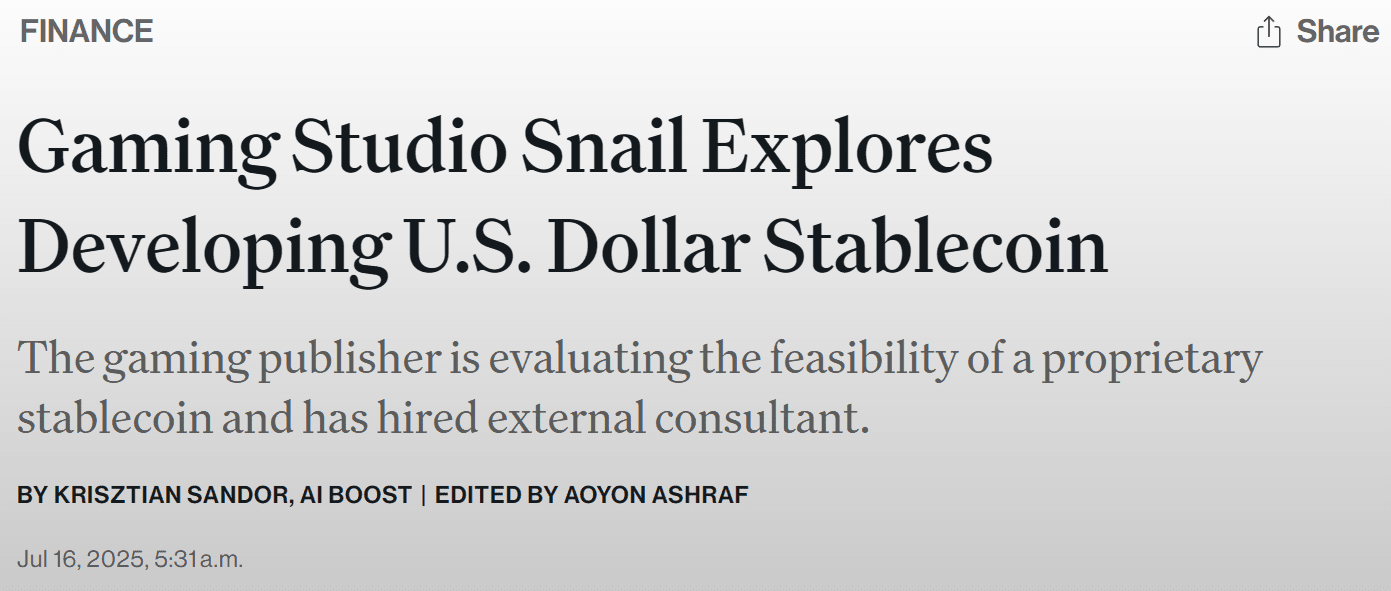 Source: CoinDesk
Source: CoinDesk
Ripple plans to apply for MiCA licensing to expand into the EU market.
 Source: Cointelegraph
Source: Cointelegraph
OpenSea launches a new platform aimed at integrating on-chain functionalities such as NFT, Token, and DeFi.
 Source: Cointelegraph
Source: Cointelegraph
Blockchain lending company Figure Technology plans to go public through an IPO.
 Source: The Information
Source: The Information
The Bitcoin project Roxom plans to launch a securities trading platform priced in BTC.
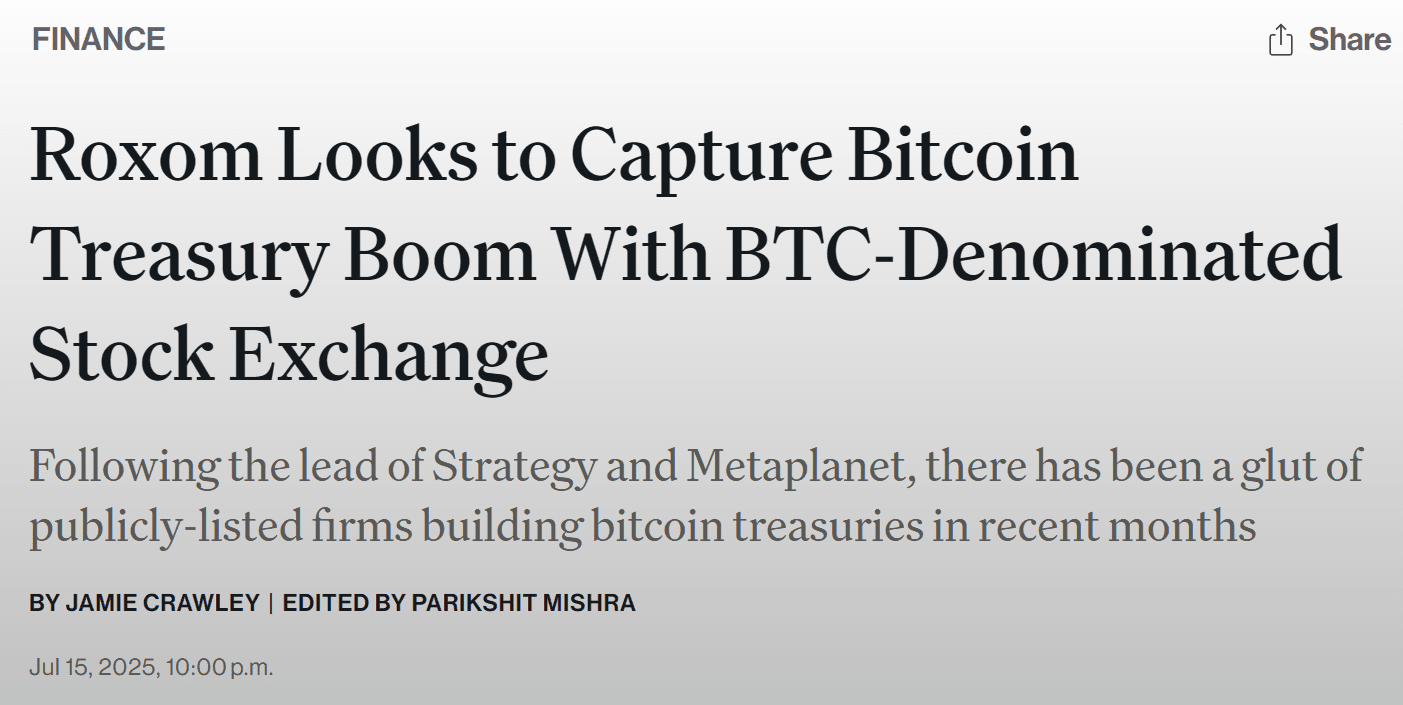 Source: CoinDesk
Source: CoinDesk
Stablecoin-driven financial institution Dakota completes $12.5 million Series A funding, led by CoinFund.
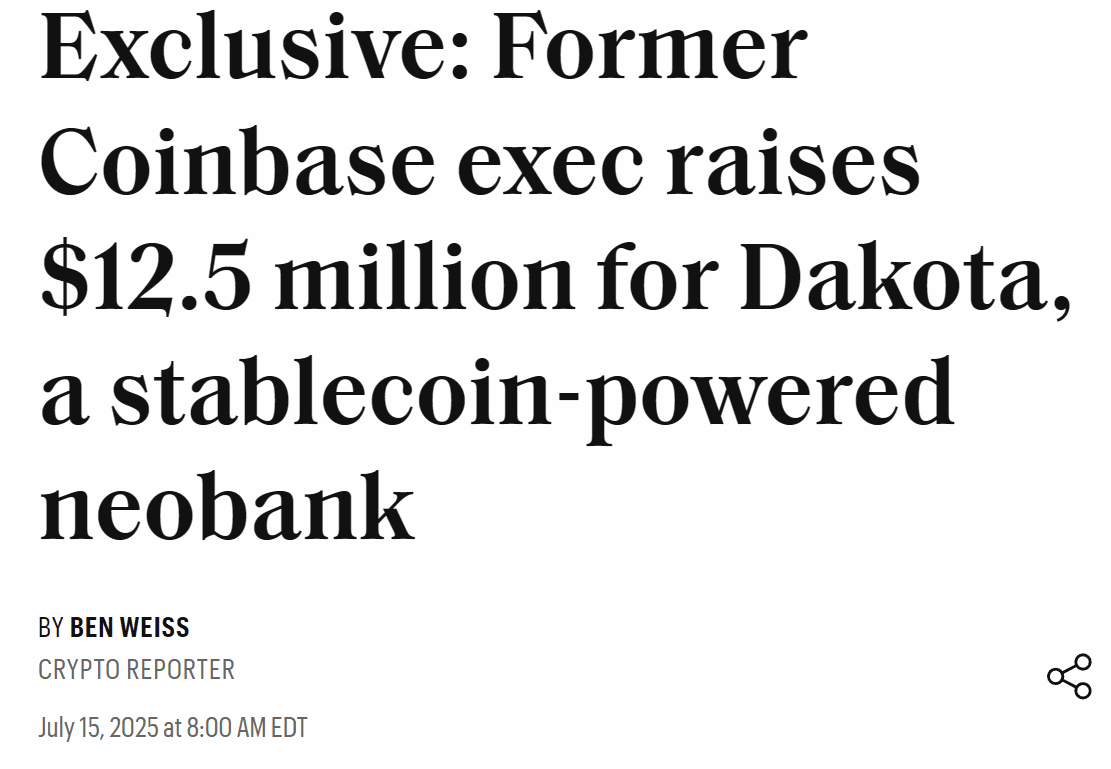 Source: Fortune
Source: Fortune
Exciting articles you may have missed.
This track-level ten-thousand-word research report is written by Web3Caff Research researcher Clare Yang, focusing on how DeFAI can reduce on-chain interaction thresholds with AI intelligent agent systems, and conducts quadruple path verification.
Can DeFAI achieve truly semantic-driven on-chain operations through intent recognition, strategy reasoning, and execution feedback within a four-layer architecture?
Does a multi-agent system suffice to support the entire process of strategy generation, protocol coordination, and execution scheduling for complex tasks?
Have representative projects such as Virtuals, HeyAnon, and Griffain already built an on-chain intelligent agent network with practical capabilities?
In the face of risks such as strategy opacity, MEV attacks, and data compliance, are there systemic challenges at the technical or governance level?
We have also included key content such as a point structure diagram, a four-layer collaborative architecture diagram for DeFAI, a comparison table of representative projects, and an ecological evolution path.
DeFAI track ten-thousand-word research report: Under the drive of 'intent', what kind of changes is generative AI bringing to the service form of DeFi? A panoramic breakdown of its market size, technical bottlenecks, ecological layout, risk challenges, and development paths.
Hester Peirce, a Republican commissioner of the U.S. Securities and Exchange Commission (SEC), noted in a statement on July 9 that tokenization can be conducted in two ways: the issuer can mint a blockchain version of its own stock, or a custodian can wrap third-party securities and issue receipts. This article explores the topic with a quick overview.
The tokenized stock market has hit the brakes: SEC commissioner clarifies that tokenized securities still fall under the scope of securities.
Stripe is a global leading payment service provider, playing a key role in ensuring smooth and secure transactions by connecting merchants, acquiring institutions, card networks, and issuing banks on a technical level. If Stripe launches an L1 network, the basic expectation is to support the use of stablecoins and to integrate Stripe L1 into client payments and merchant settlements. This article discusses the topic.
Stripe L1 hypothesis: From payment giant to blockchain disruptor, a rehearsal of a payment paradigm revolution?
Amid the challenges of uneven execution efficiency and resource scheduling pressure on the Ethereum mainnet, the EIP-7983 proposal proposed by Vitalik Buterin and Toni Wahrstaetter has entered the community discussion phase. This proposal advocates setting a gas limit of 16,777,216 gas for each transaction to enhance network stability and execution efficiency. This article discusses the topic.
Setting a gas limit for transactions? A detailed explanation of Ethereum's new proposal EIP-7983.
Disclaimer: As a blockchain information platform, the articles published on this site represent the personal views of the authors and guests, and do not reflect the position of Web3Caff. The information contained in the articles is for reference only and does not constitute any investment advice or offer. Please comply with the relevant laws and regulations of your country or region.

